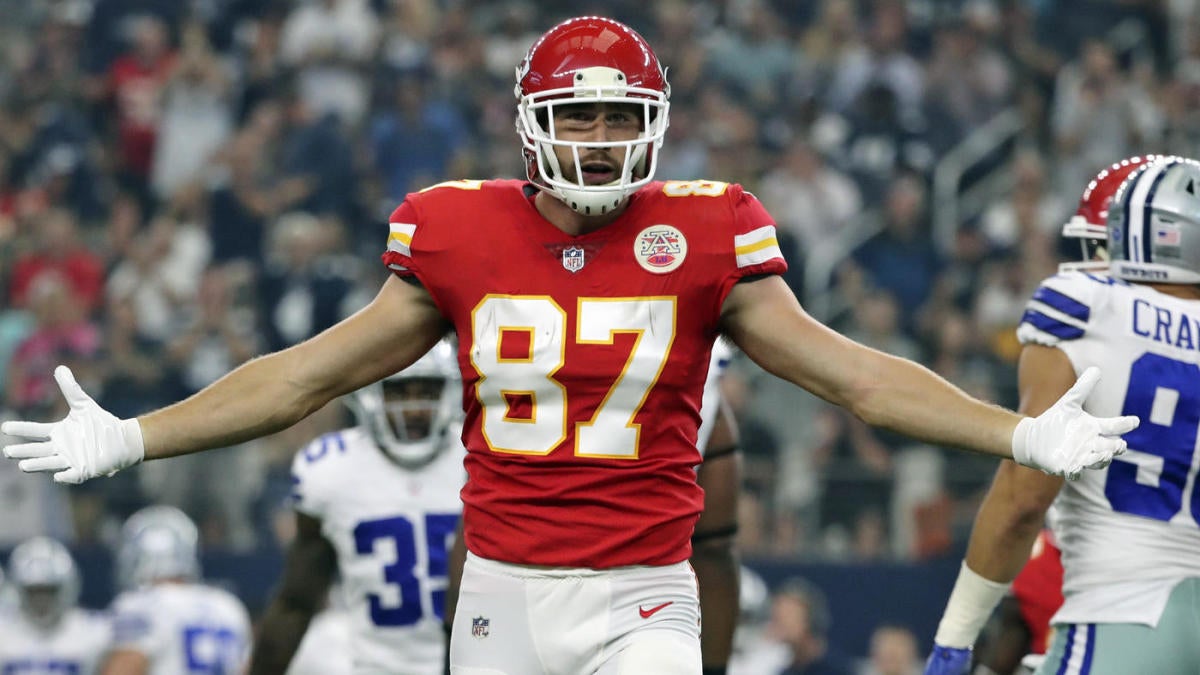Draft Strategies | Depth Charts | Mock Drafts | SOS | Tools | ADP
Diehards Staff Experts Poll | Draft Simulator | University Videos
DFS Cash Game: Tight End Breakdown and Analysis

DFS Cash Game:
Tight End Breakdown and Analysis
As kickoff to the 2020 NFL season inches closer, training camps are opening as the league prepares for an unpreceded campaign in the middle of a Pandemic. With my season-long player rankings complete, I turn my attention to preparation for the upcoming DFS crusade.
On a teacher’s salary with three lovely children, I am very conservative with family finances and discretionary spending. It is not financially viable to play in GPP tournaments with never-ending bills in the house. Consequently, I have a weekly DFS cash game budget and rarely exceed the limit. Every Sunday during the fall, I am infatuated with playing in weekly cash games on DraftKings.
My fantasy football obsession has constantly evolved. Thirty-one years ago, I commissioned my first fantasy football league, and in 1993, I won $10,000 in the Sports Challenge Fantasy Football contest, beating nearly 15,000 competitors in a salary-cap format with a pad of paper, pen and calculator.
In 1997, I started providing my weekly player rankings, including sleepers and longshots, for the Football Diehards, and continued for 20 years. Three years ago, I decided to transfer from weekly player rakings to DFS analysis and began publishing The Scholar’s Sheet of DraftKings Knowledge for cash games on the Sunday slate.

As an amateur historian, I have printed copies of all of my season-long leagues (154 since 1989) and placed in binders for the past thirty-one years. It was not a big leap to record every Summa and Magna Cum Laude lineup that I posted in the Sheet of DraftKings Knowledge. I have published 102 lineups and wanted to analyze the results among tight ends for readers.
When making DFS lineups, roster construction is often debated and discussed. One of the first questions that I answer every week is do I pay up for a tight end or dumpster dive at the position? In general, I prefer to pay down. Yet, is it the right decision moving forward? I needed to look at the results and scrutinized the data in salary ranges.
In an effort to be completely transparent, I have posted a link in Google Slides of the raw data on three sheets from all of my weekly lineups:
Click link: https://docs.google.com/spreadsheets/d/1vexFVy3bY3hShUHJQzkq4nZZuo-3gVJKE4y5Q1Limuc/edit#gid=0
Scoring Breakdown: High-Median-Low
In DFS lineups, I seek a 3.0 Price-Value ratio (PV) among all of my starters regardless of price and position. I endeavored to see if a price range provided a better bang for the buck than another. I arranged all of the results into six salary ranges and totaled the average points scored and PV results for each category.

During the past three years, I dumpster dived at the tight end position 68 times (66%): Investing less than $3,400 (6.8%) of my $50,000 salary cap. Obviously, the $2,000-plus savings allowed me to allocate capital in other positions.
Of course, DFS players must be willing to embrace a high-level of risk and variance to adopt a frugal tight end roster construction. In seven bargain-basement TE lineups, my starter scored zero points, which is a 10% rate…Ugh!
Scholar’s Tips for Targeting Tight Ends in DFS Lineups
1. Opponent Rankings versus Tight Ends: Bottom 10 Defensive Units
2. Vegas Odds: Over/Under 44 points
3. Snaps and Targets over the past three games
4. Home Underdog: Advantageous 4th Quarter Game Script
5. Salary Cost vs. Personal Rankings
Fortuitously, there is also a pleasant PV return rate that must be factored into the bargain-basement approach. In 32 of my 68 lineups (47%), my selection exceeded a 3.0 PV ratio. (Please see Salary Results Breakdown on Google Sheets.) At times, the results far exceeded any reasonable performance outcomes.
Scholar’s DFS One-Week TE Wonders
- Ryan Griffin, Jets: 24.9 points (2019)
- Kaden Smith, Giants: 21.5 points (2019)
- Chris Herndon, Jets: 20.2 points (2018)
- Antonio Gates, Chargers: 20.1 (2017)
When I did decide to pay up at the position (over $4,500), my average points scored and PV increased over the bottom dwellers. I made a cash game lineup 12 times with a significant investment, averaging 19.8 points and a 3.76 PV ratio. Three times (25%) the player produced over 32 points and only twice (17%) less than ten.

Also, there is a middle class of investments—$3,500 to $4,400 range—over the past three years. When I willingly spent a greater percentage of salary, I earned a very nice return on 22 players priced in the mid-range: The starter averaged 12.3 DraftKings points and produced a 3.29 PV ratio.
Scholar’s Most Owned DFS Tight Ends
Player, team (starts): average points, PV Ratio
- Austin Hooper, Falcons (7): 16.9, 4.79
- Dallas Goedert, Eagles (6): 7.1, 2.17
- Cameron Brate, Buccaneers (5): 5.8, 1.53
Tight End DFS Conclusion
There is not a one-size fits all solution for optimal roster construction that guarantees winning. I have profited by selecting tight ends in every price range, and DFS players can finish in the red no matter how much of their salary cap is allocated to the position. It depends on the DFS managers risk level selecting a tight end.

Scholar’s Fun Facts: DFS Tight Ends Cash Game Results
- Over 3.00 PV Scoring: 54 (or 53%)
- Less than 1.00 PV Scoring: 16 (16%)
- Over 20 points scored: 14 (14%)
- Over 10 points scored: 47 (46%)
I obviously prefer to pay down at the position and will likely continue to do so the majority of weeks in 2020. In cash games, the data indicates that obtaining a tight end in the $3,000 to $3,900 range maximizes value for points scored and PV ratio.
In GPP contests, I would recommend paying the premium for a tight end. The rates of return are much higher when the correct starter is identified, and possibly, may differentiate your lineup from other competitors in large tournaments.
Feel free to DM me on Twitter, @GridironSchol91, with any questions and comments.
